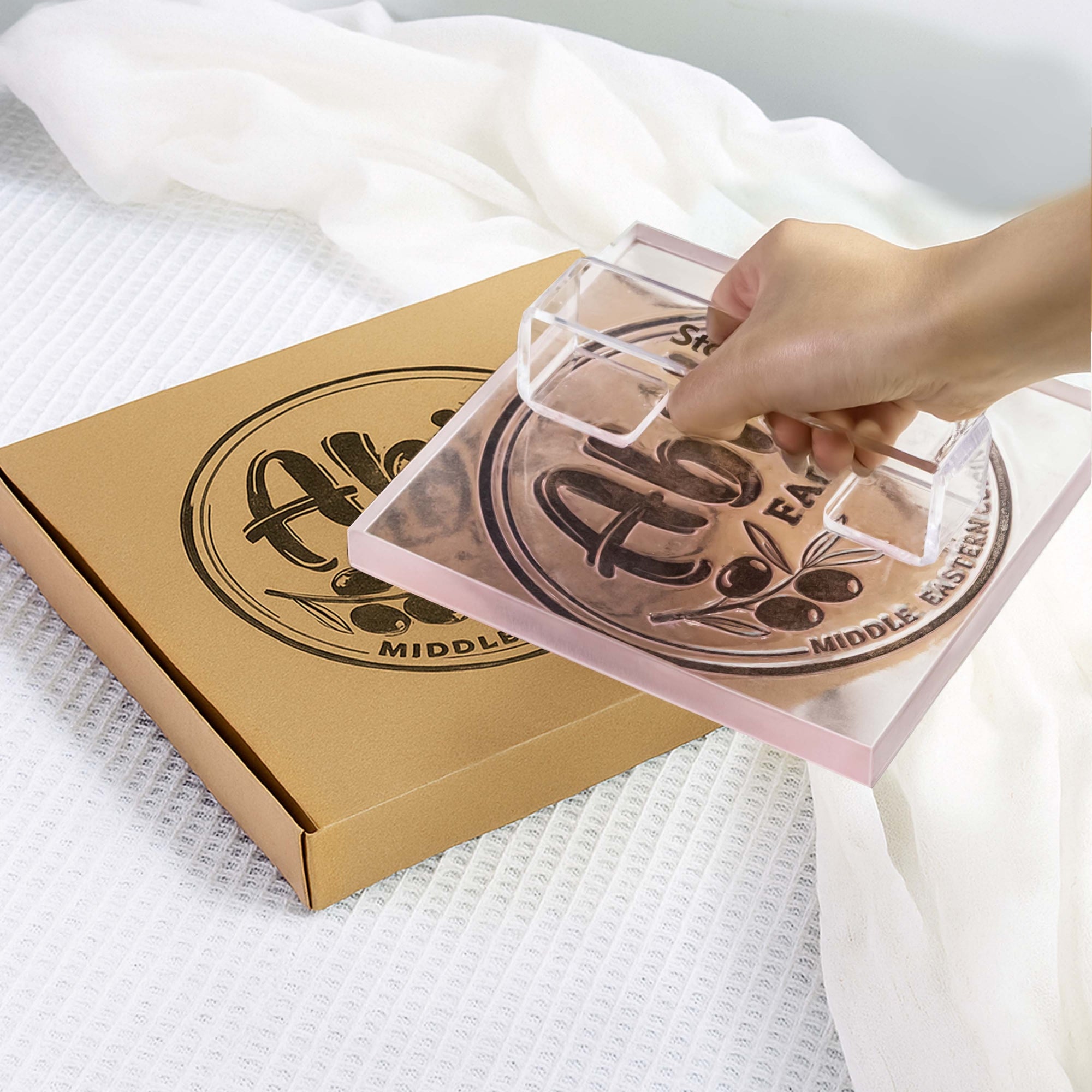書籍浮雕的世界是想像力與複雜工藝的結合。在這種小眾藝術形式中,先進的創作者將精湛的技術與肆無忌憚的創造力融為一體,將文學敘事實際印在書籍封面上。這是一項需要精密技巧和藝術視野的工藝,才能將普通的表面變成非凡的三維掛毯。
為什麼 精確 事項: 書籍壓紋
書籍壓印需要令人難以置信的控制力和精確度。要獲得清晰、凸起的印象,需要仔細平衡三個關鍵因素——壓力、溫度和時間。壓力太大會扭曲或過度拉伸設計,而壓力太小則無法留下清晰的印記。必須針對特定材料對溫度進行微調,因為皮革、紙張和織物的反應都不同。精確的時間至關重要——時間太長,就會面臨烘烤過度的風險,這可能會燒焦或使材料變硬,但時間太短則意味著烘烤不足、印象淺。
對於浮雕大師來說,這種嚴格的掌握使他們的藝術視野得以蓬勃發展。最初是簡單的文字或邊框,現已演變成複雜詳細的比喻場景和象徵性構圖。曾經局限於書面頁面的圖像現在以生動的、紋理的維度出現——在書本封面上物理地體現了文學敘事。

要避免的常見錯誤
然而,隨著雄心勃勃的壓花商不斷提高設計標準,推出更精緻的設計,他們面臨一系列潛在的陷阱:
- 壓力不一致會導致壓痕不均勻,壓印區域太深,而幾乎沒有壓花的區域。
- 未對準的壓花模具、印版或印模會對組合物的無縫流動造成難看的破壞。
- 溫度設定不當可能會燒焦材料,留下燒痕,或無論施加多大壓力都不會留下痕跡。
- 對於複雜的多層設計,錯誤地安排壓花元素的順序可能會導致整個佈局失去對齊。
即使對於熟練的壓花工人來說,在複雜的項目上只要出現輕微的誤算,就會很快毀掉數小時的辛勤工作。避免這些陷阱需要專注、經驗和創造性地解決問題。
壓花材料:您需要了解的一切
成功的壓花師了解每種材料的性能不同,需要量身定制的方法。為了適應皮革、紙張或織物的獨特品質,請考慮以下事項:
- 皮革:皮革柔軟,在壓花過程中可以拉伸。為了防止變形,請使用比其他材料稍低的壓力和溫度。進行實驗 不同等級的皮革 找到最適合您設計的一款。
- 紙:紙張是纖維狀的,會吸收水分,影響其壓花性能。確保您的論文具有 適當的含水量 (通常為 8-12%)以獲得最佳效果。與皮革相比,使用更高的壓力和更低的溫度來獲得清晰的印象。
- 織物:織物的編織結構使其難以獲得一致的印象。使用穩定劑或背襯材料來防止拉伸並確保均勻的壓力分佈。根據織物的厚度和成分調整溫度和壓力。
使用任何材料時,請在廢料上進行壓花測試,以測量其對不同設定的反應。這將幫助您微調您的技術並避免最終產品的潛在問題。
遇到意外錯誤時該怎麼辦
一些最引人注目的浮雕書籍封面就源自於這種擁抱意外的即興心態。經驗豐富的壓印師不會將錯置的印章或不均勻的印痕視為錯誤,而是將其視為有意進行藝術表達的機會。
例如:
- 稍微歪斜的設計邊框可以增加能量的不對稱性
- 印象深刻的地方變成大膽的肌理元素
- 由於纖維不一致,材料不能很好地進行壓花的部分被視為抽象的紋理拼貼畫
壓花大師培養開放的心態,將計劃外的凹槽、皺紋和凸起的邊緣視為缺陷,而不是視覺上講述故事的可能性。他們將最初的概念流暢地調整為與有機壓花工藝相協調的創意解決方案。
正是這種即興發揮和駕馭偶然的能力,使他們能夠將一本普通的書籍封面變成一部前衛、獨一無二的傑作,每一個曲線和縫隙背後都充滿了藝術意圖。
書籍壓印stamprints 的圖案可以客製化嗎?
是的,許多提供者(例如 StamPrints)提供自訂設計、徽標或文字的選項 書籍浮雕印章。這使您可以添加個人風格或融入主題元素來補充您的書籍內容。
StamPrints 提供兩種獨特的客製化書籍壓印
- StamPrints 客製化貓和星空書籍壓紋機:這款迷人的浮雕圖案是一隻迷人的貓站在一疊書上,凝視著星空和月亮。它非常適合書籍愛好者、學術機構和辦公室,將奇思妙想與精緻融為一體。
- StamPrints 客製化植物書籍壓花機:這款浮雕展示了裝飾有生機勃勃的植物的書籍,並允許您用您最喜歡的引言或訊息來個性化文字。它頌揚文學與自然之間的聯繫,將每本書變成獨特的藝術作品。
兩種壓花機均由黃銅和不銹鋼製成,尺寸為 100 x 100 毫米,黃銅板直徑為 42 毫米。它們具有固定的設計方向,但您可以在訂購時指定您的首選方向。
和 StamPrints 的定製書籍壓紋機,您可以創建反映您獨特風格的書籍封面並提升您的閱讀體驗。

實際考慮
- 雖然從技術上講,書頁壓花機可以在任何頁面上使用,但建議在第一頁或最後一頁上使用它,以避免損壞裝訂。
- 書籍浮雕
stamprints 用途廣泛,可以適應不同的書籍尺寸,但選擇相容的stamprints 尺寸對於獲得最佳效果至關重要。 - 壓花機可以在精裝書和平裝書上工作。精裝書提供了堅固的基礎,而平裝本則需要更加小心,以避免過度縮排。
透過平衡實驗精神與堅持經過驗證的技術,並保持對創意改編的開放態度,先進的浮雕師可以始終如一地製作出充滿有意的藝術性的前衛書籍封面敘事。
壓花大師-精準與無拘無束的創造力的結合
書籍浮雕融合了細緻的技巧和自由流暢的藝術表現力。當您掌握這門手藝時,您的書籍封面將成為吸引感官並激發想像的體驗。每一種紋理和輪廓都將引導讀者踏上一段獨特的旅程,展示當您將精確的技巧與勇氣結合起來,將您最大膽的願景變為現實時,您的創造力如何閃耀。






